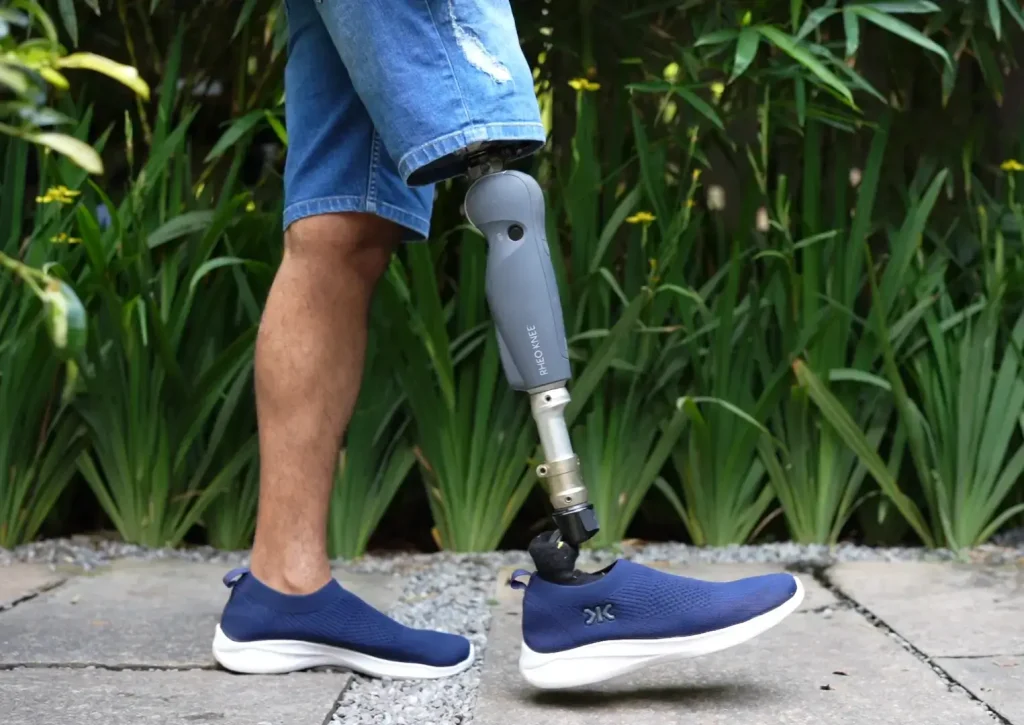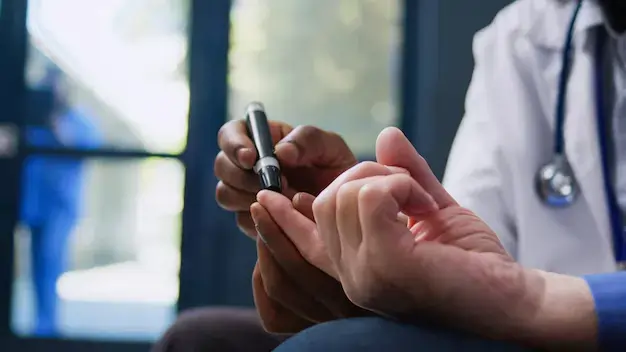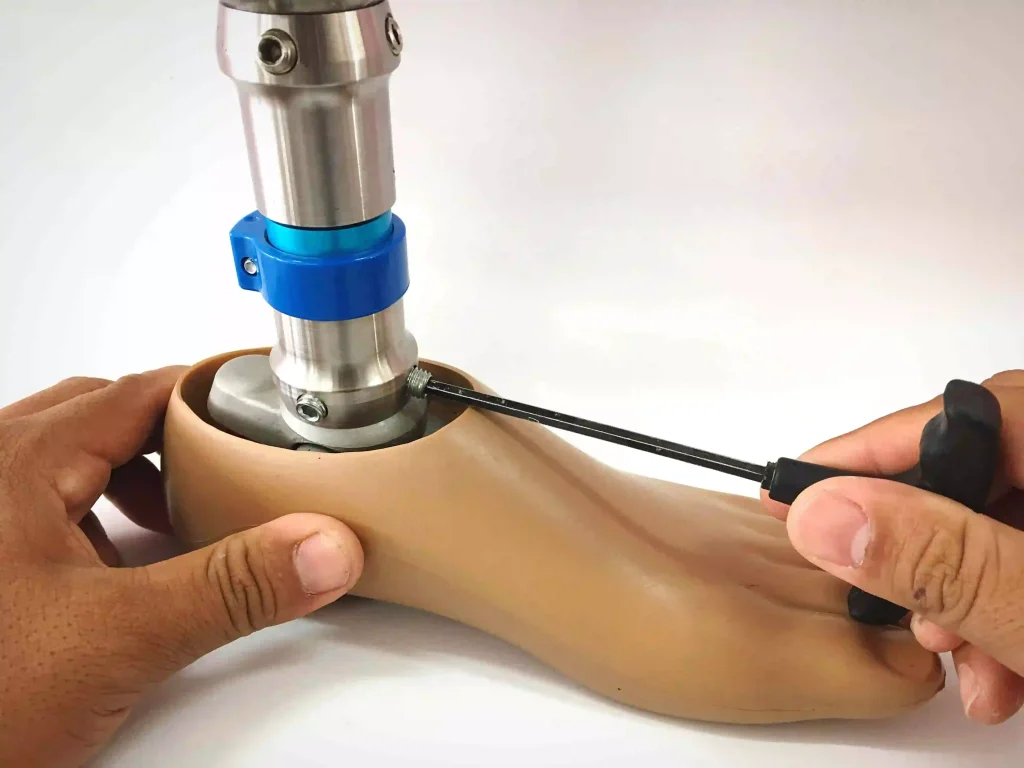Recovering from an above-knee amputation is a gradual process that requires patience, support, and proper care. It begins with healing the surgical site and managing any discomfort. As recovery continues, physical therapy plays a key role in rebuilding strength, balance, and confidence. Once the residual limb has healed and taken shape, the next step is getting fitted for a prosthetic leg. Learning to walk again, adapting to daily life, and staying mentally strong are all important parts of regaining independence and returning to an active lifestyle.
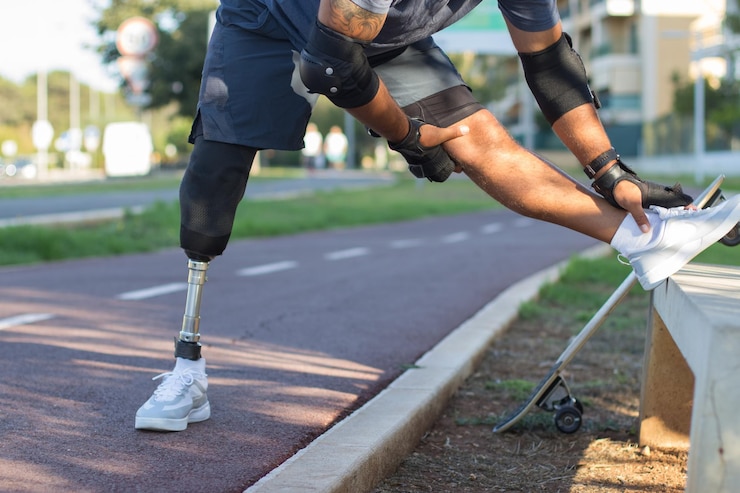
We know that above knee amputation is a life-changing experience that requires both physical and emotional adjustments. To recover, concentrate more on emotional balance rehabilitation and find prosthetic solutions. For that, you need the proper support, guidance, and the best prosthetic options to restart your freedom and life with confidence.
This blog will guide you through the process of leg amputated above knee recovery, and offer tips for moving forward.
Common Reasons for Above Knee Amputation
Transfemoral or above knee amputation is done when the lower limb and prosthetic knee joint must not be salvaged. Here are the common reasons:
- Severe Trauma: Irreparable injuries because of RTA or fall.
- Peripheral Artery Disease: Reduced blood circulation leading to gangrene or dying of tissues (gangrene).
- Diabetes Complications: Diabetes without sufficient care invades ulcers, infections, or gangrene.
- Cancer: Cancer that forms in an elbow or knee, like sarcoma or osteosarcoma.
- Congenital Defects: Visible limb deformities or absence of one or both limbs and prosthesis.
- Failed Limb Salvage: In reconstructive surgeries that do not yield the desired results.
- Frostbite: It is described as bodily tissue injury due to freezing and cold.
- Vascular Diseases: Buerger’s disease, which results in the death of skin tissue, is one example.
- War Injuries: Wound because of any explosions.
3 Key Steps to Prepare for Life After Above Knee Amputation
1. Emotional Readiness
After your leg amputation above the knee, you can’t believe that one of your organs has left your body. You may have feelings of anxiety, grief, and uncertainty about your future. Processing these emotions through counselling, therapy, and supporting groups takes time. You will get better emotional support when you surround yourself with loved ones. And it is very essential after your leg amputation above the knee.
2. Physical Therapy
To strengthen the residual limb and improve overall mobility, physical therapy is essential after surgery. It can help you regain strength and flexibility, prepare your body for prosthetic use, and address post-surgery complications. For that, your physiotherapist will guide you through total knee replacement exercises to build your power, balance, and mobility, which are essential for using prostheses
3. Prosthetic Fitting and Adjustment
After surgery, it is mandatory to discuss your residual limb properly with the prosthetist so they can evaluate it easily and suggest the best prosthesis based on your activity level, goals, and limb shape. The fitting process is not easy because it involves many steps, such as moldings, adjustments, and trials, to ensure that the prosthetic fits well and is comfortable.
How Rehabilitation After Above Knee Amputation Helps Recovery
The recovery period of an above knee amputation rehabilitation is about rebuilding your strength one healing step at a time. Rehabilitation involves:
1. Initial Healing Phase
Initially, the surgical site heals and recovers. Later, the healthcare team will collaborate to manage pain, infections, and swelling.
2. Physical Therapy Begins
As you go forward, physical therapy is a routine part of the process. Therapists help you:
- Improve strength in your residual limb and upper torso.
- Practice balance and coordination.
- Preventing joint and muscle stiffness.
- Getting your body ready for the prosthetic leg
3. Training with a Prosthesis
Prosthetic training begins when the remaining limb is ready. This includes:
- Wearing and walking with a prosthesis
- Learning to stand, walk and climb stairs.
- Posture and gait training.
4. Emotional and Social Support
Above knee amputation rehabilitation helps physical and emotional healing. Therefore, seeking counselling, joining groups, or communicating with others can be healing.
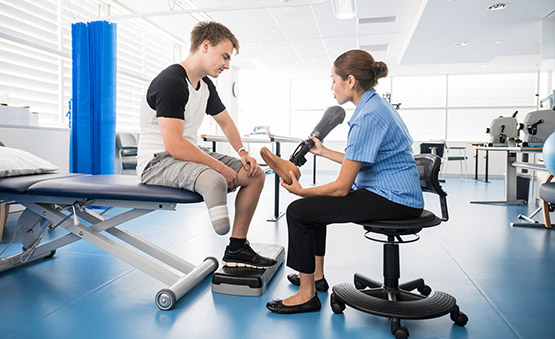
Post-Operation Limb Positioning After Above-Knee Amputation
It is critical that you properly position your amputated limb right after surgery. Positioning right will be essential in preventing joint contractures. Contractures in joints often make prosthetic fitting and walking difficult later.
1. Why Positioning Matters
Positioning is critical, as there is a high chance that the thigh muscles may tighten if the limb is kept bent. This may lead to the hip joint stiffening in a bent position. Thus, it may be challenging to walk or wear a prosthetic leg.
2. Key Limb Positioning Tips:
- Do not sit for long hours, and avoid bending your hips over 90 degrees.
- Avoid pillows under your thigh or between your legs.
- Lie on your back for 20–30 minutes at a time during the day.
- Lie on your stomach briefly to maintain hip flexibility.
- Keep your leg straight when sitting or resting, and support it with a firm surface.
3. Daily Habits:
- Stretch and change positions.
- Stick to your physiotherapist’s advice.
- Sit, sleep, and rest your limbs carefully.
How Prosthetic Leg Fitting Works After Above Knee Amputation
If you undergo a leg amputation above the knee, the doctor prescribes a short-term prosthetic leg for the first month of the residual limb healing. During this phase, the particular limb is not growing anymore and its shape becomes more defined.
The prosthetist will then take measurements for a final socket and other parts that may be necessary, such as a prosthetic knee joint, ankle joint, and prosthetic foot. This step ensures better comfort, functionality, and long-term success in regaining mobility.
What Are the Key Components of an Above Knee Prosthetic Leg?
- Socket: This is where your residual limb fits into the prosthesis. It ensures a fit, comfortable connection and distributes weight evenly to prevent pressure points. A well-designed socket is key to stability and long-term use.
- Prosthetic Knee joint: Acting as the hinge, it replicates natural knee movements. Advanced options like microprocessor-controlled knees allow smooth walking and adjust to uneven surfaces. For example, KARE offers options like OSSUR’s Rheo knee for superior adaptability.
- Adapter Components: Provide flexibility and balance, enabling smoother walking or standing transitions. Functional ankle joints make the prosthetic feel more natural.
- Prosthetic Foot: Designed for shock absorption and support, the foot contributes to energy return while walking or running. Options (all the carbon fibre feet) can balance functionality and comfort.
How Do You Put a Prosthetic Leg Above the Knee?
- Ensure your limb is clean, dry, and free of lotions.
- Roll a silicone or gel liner onto your leg, starting at the end of your residual limb. (if silicone or gel prescribed)
- Roll the liner inside out so the silicone or gel spaces outward.
- Gently roll the liner on to avoid wrinkles or trapped air.
- Position the prosthetic foot, which is usually turned five degrees outside.
- Slide your residual limb into the socket.
5 Important Routines to Follow While Using Artificial Leg Above Knee
1. Get the Perfect Artificial Leg Above-Knee
An artificial leg above knee must fit correctly to allow the user to move around easily and comfortably. The prosthesis, well fitted to a patient, enables one to balance, walk, run, or any other activity.
2. Orthopedic and Physiotherapy
Work with a therapist to enhance your muscles, practice fitting your prosthetics, and improve your gait and balance.
3. Do Different Activities
With the right artificial leg above the knee, depending on the prosthetic design, you can return to sports like cycling, swimming, or running or do all the usual activities.
4. Adapt to the Home and Work Environment
Modify your living and working spaces to ensure accessibility and ease of movement with your prosthetic leg above knee.
5. More Focus on Self-Care and Skin Health
Maintain proper hygiene and care for your residual limb to prevent infections or skin issues caused by the prosthesis.
Top 3 Recovery Tips After Above Knee Amputation
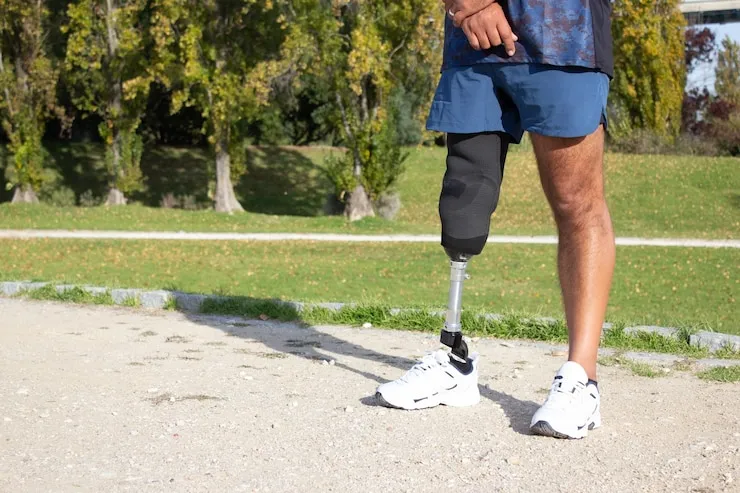
- Take One Day at a Time: Recovery is a very slow and challenging process, so find happiness in your small or big progress. If you improve your mobility, you can use the prosthesis successfully.
- Stay Connected with Others: Stay connected with people who understand you and avoid isolation during recovery. Share your own experience with different groups, online forums, or local amputee associations so that you can help them and provide insight into overcoming challenges.
- Celebrate Your Progress: After an above knee amputation, recovery takes time. Whether you’re practicing your favorite activity or taking your first step with a prosthetic, always thank yourself for your progress. These moments make you forget what you lost and remind you of achievements.
“Life after an above-knee amputation is no longer out of reach. Thanks to modern prosthetic technology and expert care, many individuals return to their routines and passions. Choosing a prosthetic leg that matches your medical needs ensures better comfort and mobility.”
Conclusion
Experiences have shown that anyone who has undergone above knee amputation must be prepared to take time and a lot of energy before they are in a position to live everyday life. Emotional readiness, physical therapy, and appropriate prosthetic treatment help people not to notice difficulties and become free again.
KARE is one of the best prosthetic and orthotic solutions in India. It provides customized patient care for all above-knee amputees because it concentrates on expertise in these fields. KARE provides high-quality prosthetics and orthotics with accurate measurements and individualized treatment to those with disabilities, specializing in assistive technology and rehabilitation solutions supported by highly motivated clinical staff.
Contact us now if you are still confused or looking to restart your life after above knee amputation.




